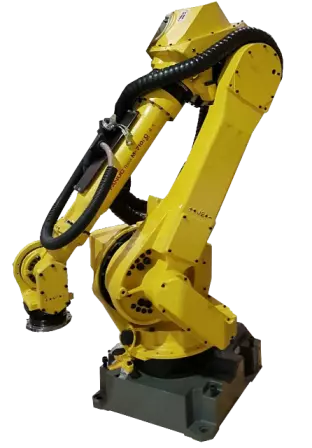Imagine factory floors teeming with tireless workers, their arms moving with precision and agility. These aren’t superhumans, but the result of the Articulated Robot Market, a sector powering the rise of automation with these versatile industrial marvels. Articulated robots, with their many joints mimicking human limbs, are revolutionizing manufacturing and various other fields by automating tasks, improving efficiency, and ensuring consistent quality. Their ability to handle complex movements, coupled with increasing ease of programming, makes them ideal for a wide range of applications. Driven by rising labor costs, the growing demand for production flexibility, and continuous advancements in robotics technology, the Articulated Robot Market is experiencing significant growth. Let’s delve into the diverse applications of articulated robots and explore the exciting trends shaping this dynamic market.
The Robot Revolution: Applications of Articulated Robots
Articulated robots are transforming industries with their diverse capabilities:
- Manufacturing: From welding car parts to assembling electronics, articulated robots handle repetitive tasks with precision and speed, boosting productivity and reducing human error.
- Material Handling: These robots automate tasks like palletizing, loading and unloading machines, and material transfer, improving efficiency and worker safety in logistics operations.
- Painting and Coating: Articulated robots provide consistent and precise application of paint, varnish, or other coatings on various products, ensuring a high-quality finish.
- Assembly and Disassembly: Robots with high dexterity can perform intricate assembly tasks or efficiently disassemble components for recycling or maintenance.
- Quality Control: Equipped with vision systems, robots can inspect products for defects with unmatched accuracy and speed, ensuring consistent quality control.
- Food and Beverage Processing: From food packaging to delicate handling of fruits and vegetables, robots are automating tasks in the food and beverage industry, improving hygiene and production efficiency.
Get Exclusive Sample Copy of the Report: https://www.futuremarketinsights.com/reports/sample/rep-gb-17861
The Future is Automated: Growth Drivers in Articulated Robots
The Articulated Robot Market is experiencing a surge in popularity driven by several key trends:
- Rising Labor Costs: As labor costs continue to rise, particularly in developed economies, articulated robots offer a cost-effective solution for automating tasks and improving production efficiency.
- Demand for Production Flexibility: Manufacturers are increasingly seeking ways to adapt their production lines to handle different product variations or changing customer demands. Articulated robots, with their programmability, offer the flexibility needed for such agile manufacturing practices.
- Advancements in Robotics Technology: Continuous advancements in areas like artificial intelligence, sensor technology, and motion control are leading to more sophisticated, adaptable, and user-friendly articulated robots.
- Growing Focus on Safety: Robots can handle dangerous tasks like welding or working with heavy machinery, reducing the risk of workplace injuries.
- Expanding Applications: As the capabilities of articulated robots continue to evolve, new applications are emerging in sectors like healthcare, agriculture, and logistics, further propelling market growth.
The Articulated Robot Market is forecasted to account for around USD 20.4 billion in 2033, up from USD 9.2 billion in 2023 advancing at a rate of 8.3% from 2023 to 2033, as per the articulated robots market analysis by FMI.

Challenges to Consider: Building a Collaborative Future
Despite the promising outlook, the Articulated Robot Market faces some hurdles:
- High Initial Investment: The upfront cost of acquiring and installing articulated robots can be significant, especially for small and medium-sized enterprises.
- Skilled Workforce Integration: Successful robot implementation requires a workforce with the skills to program, maintain, and operate these sophisticated machines.
- Safety Concerns: Proper safety protocols and training are essential to ensure safe human-robot interaction on the factory floor.
- Technological Advancements and Job Displacement: Concerns exist about the potential for job displacement due to automation. However, robots are increasingly seen as collaborative tools that can augment human capabilities and create new job opportunities.
Get Report Now: https://www.futuremarketinsights.com/checkout/17861



